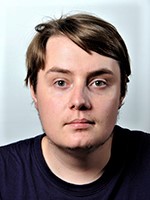Disputation
The Disputation will be held digital using Zoom. The Chair of Defence will lead the Disputation and a Defence technician will solve technical issues.
Ex auditorio questions: The Chair of Defence will invite the audience to ex auditorio questions. These can be asked orally, by clicking "Participants - Raise hand" in the Zoom menu. The Zoom-host will grant you to speak in the meeting.
Order the Dissertation as PDF from this email address. Please add name of the Candidate: a.c.gartner@kjemi.uio.no
Trial lecture
5th. of May 2022 at 11:15 AM, Zoom
Title: "Machine learning for wavefunction-based electronic structure methods”
Conferral summary
I sin avhandling har kandidaten utviklet programvare som bruker “coupled-cluster” metoder for å simulere elektrondynamikken i molekyler indusert av vekselvirkning med en laserpuls.
Main research findings
Coupled-cluster (CC) theory, often referred to as the gold standard of quantum chemistry, defines a convergent hierarchy of increasingly accurate methods for the description of molecular properties. The same hierarchy of methods can be extended to time-dependent electronic structure theory which is then referred to as time-dependent CC theory (TDCC).
TDCC theory can be formulated with static orbitals or with dynamic orbitals. In his thesis, the candidate has developed software implementing both variants. An assessment of the importance of employing dynamic orbitals is given.
A drawback of TDCC theory is the difficulty of interpretation due to the non-Hermitian formulation. For example, there is no fully consistent definition of excited states in CC theory, preventing the calculation of stationary-state populations. Based on equation-of-motion CC (EOMCC) and CC linear response (CCLR) theory, we propose two sets of projection operators that yield time-dependent stationary-state populations as expectation values.
Furthermore, TDCC methods are computationally expensive. To bring reduce the computational cost, approximations to specific orders of the theory can be formulated based on perturbation theory. The candidate has developed a program for a second-order approximation to TDCC theory with dynamic orbitals and applied the method to the description of optical properties in small molecules.
